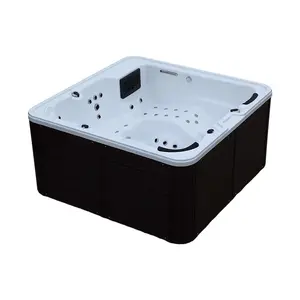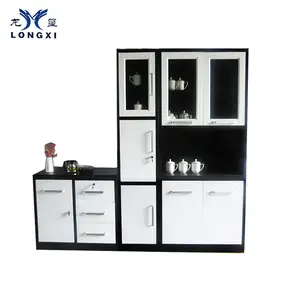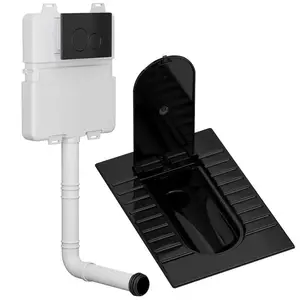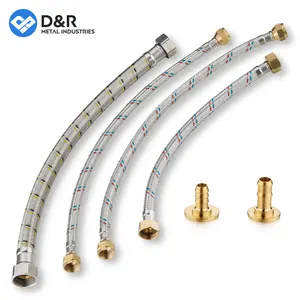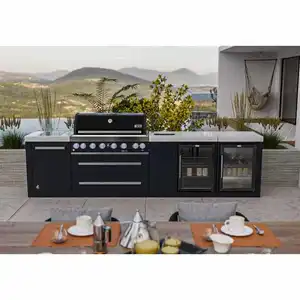Popular in your industry







































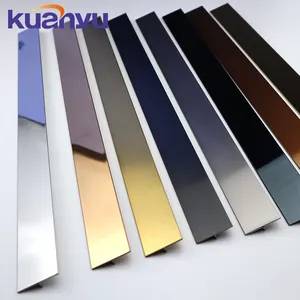

























Related Searches:








































































































































Top categories
About tile metal edge trim
Introduction
Transforming your space can be as effortless as incorporating a touch of sophistication with tile metal edge trim. This design element, commonly found in bathrooms and kitchens, not only elevates the aesthetic appeal of your space but also offers practical benefits. From delivering a high-quality finish to safeguarding your tiles from damage, tile metal edge trim is a versatile design tool that can be customized to fit various styles and needs. This detailed guide will delve into the world of tile metal edge trim, exploring its benefits, types, selection process, installation, and maintenance.
Understanding Tile Metal Edge Trim
Tile metal edge trim, a frequent sight in bathrooms and kitchens, is a design element that introduces a graphic style to the space. It's used to cap the backsplash or frame the floor tile, creating a standout effect. The trim can be in different colors, such as matte black or stainless steel, to harmonize with the room's aesthetic. It not only adds a subtle yet impactful detail that reinforces symmetry but also provides a clean, protected edge. This versatile design tool can be used in various styles, from industrial to minimalist, and even in a French-bistro-inspired kitchen.
Benefits of Using Tile Metal Edge Trim
Tile metal edge trim offers a high-quality finish that is unmatched in durability. Ideal for high traffic areas or locations that come into contact with chemicals, metal trim won't wear or corrode easily. It's possible to coordinate with fixtures and fittings to create a cohesive, slick look. Not only does it cover the unfinished edges of your tiling project, but it also protects your tiles from chips and water damage, and masks tile imperfections and uneven surfaces.
Different Types of Tile Metal Edge Trim
Tile metal edge trims come in various types, each offering unique aesthetics and functionality. The 'Radius Trim' is a popular choice, providing a smooth, rounded finish to your tiles. 'V-cap Edging' is perfect for countertop applications, offering a neat, clean edge. 'Base Tiles' serve as a transition between your wall and floor tiles. 'Borders and Accent Tiles' add decorative elements to your space, while the 'Rounded Tile Edge Trim' offers a softer edge finish. Each type has its unique advantages, making it essential to choose based on your space's style and practical needs.
Selecting the Ideal Tile Metal Edge Trim for Your Space
Choosing the right tile metal edge trim is crucial as it impacts the overall look and functionality of your space. The choice depends on the appearance of your tiles, the trim style, and the space's purpose. For areas exposed to water, rust-proof materials like aluminum are necessary. In high-traffic areas, durable materials like stainless steel are ideal. The trim size should be one-sixteenth to one-eighth of an inch deeper than the tile. Also, consider the color and material that best complements your tile. Remember, the wrong fit can create a messy look, undermining your tile design.
Considerations Based on Your Space's Style
For edging purposes, a combination of materials can be mixed and matched to create a rich sense of depth in your room. Get creative with contrast by pairing ceramic and glass or installing glass tile with stone accents. Metal edge trim is a rapidly growing trend that’s available in a wide array of styles and finishes. Use metal trim in your bathroom to create a clean and contemporary transition to another surface that also matches the finish of your sink faucet or shower head. If you’re installing subway tile, turn your tile vertically to create a defined edge at the top or border.
Practical Needs of Your Space
Tile edge trim is not just about aesthetics; it also serves a practical purpose by protecting the edges of your tiles from chipping and wear. Therefore, it's essential to choose trim that is durable and able to withstand the rigors of daily life. Stainless steel, aluminum, and PVC are common materials known for their durability, making them excellent choices for tile trim edging in high-traffic areas. The installation method of your tile trim edging can significantly affect the final result. Some trims are designed to be tiled in during tile installation, while others can be retrofitted onto existing tile.
Installation Process of Tile Metal Edge Trim
Installing tile metal edge trim is a straightforward process that varies based on the support surface. For wall installations, spread adhesive first, then secure the trim. For floor installations, it's slightly more complex, requiring securing with screws. The trim selection should match the tile thickness. After spreading adhesive on the desired surface, press the perforated flange of the tile edging into it, aligning with the wall tiles. Use a spirit level to ensure the edging is plumb, then install the tiles. The process requires careful measurement, accurate cutting, and diligent application of adhesive for a professional finish.
Preparation for Installation
Before installing tile metal edge trim, measure the required length with a tape measure, considering any cuts needed. Choose the trim according to the tile thickness. If installing on an outside wall corner, tile one side first, then apply adhesive on the other side. Press the perforated flange of the tile edging into the adhesive, aligning it with the wall tiles. Use a spirit level to ensure the edging is plumb. It's recommended to secure the floor tile edging with screws for a more secure fit.
Step-by-Step Installation Guide
Installing tile metal edge trim involves several steps. First, measure the needed length and mark the cuts on the trim. Cut the trim using a miter box and a hacksaw. Secure the trim to the floor with screws, ensuring it's level and aligned. Next, cut the tiles to fit into location, using a tile cutter or a wet saw. Lay the tiles on adhesive, using tile spacers for even spaces. Finally, clean the floor thoroughly and remove any adhesive residues. This process ensures a professional finish and protects the edges of your tiles.
Post-Installation Care and Maintenance
Maintaining your tile metal edge trim post-installation involves regular cleaning to remove dirt and grime. Inspect for any damage periodically and avoid abrasive contact to prevent scratches. Ensure proper sealing and waterproofing to protect against moisture damage. Regular grout maintenance is also essential. During renovations, take steps to protect the trim from damage. Avoid using harsh chemicals that can cause damage. Establish a regular maintenance routine and seek professional assistance when necessary.
Cleaning and Maintenance Tips
Maintaining your tile metal edge trim involves regular cleaning to remove dirt and grime. Inspect for damage periodically and avoid abrasive contact to prevent scratches. Ensure proper sealing and waterproofing to protect against moisture. Grout maintenance is crucial to keep the trim looking fresh. During renovations, ensure the trim is protected to avoid accidental damage. Avoid using harsh chemicals that can cause damage. Establish a regular maintenance routine and seek professional assistance when necessary.
Preventing Damage and Prolonging Lifespan
The lifespan of your tile metal edge trim largely depends on its material and how you care for it. For PVC tile trim, avoid exposure to high temperatures and harsh chemicals. Aluminium trim requires regular polishing to prevent oxidation and should be kept clear of alkaline substances like grout or adhesive. Stainless steel trim, while non-porous and easy to clean, also needs regular polishing to prevent tarnishing and rusting. Most tiles and tile trims don't require strong chemical cleaners; warm water and mild detergent are usually sufficient.
Conclusion
In conclusion, tile metal edge trim is a powerful design element that can transform your space. It offers a blend of aesthetics and functionality, with various types to choose from based on your style and practical needs. The right choice of trim can enhance the overall look of your space, while also offering protection to your tiles. The installation process, though straightforward, requires careful measurement and application. Post-installation, regular maintenance is key to prolonging the lifespan of your trim. Whether you're aiming for a minimalist design or a French-bistro-inspired kitchen, tile metal edge trim can be your ultimate design tool.
